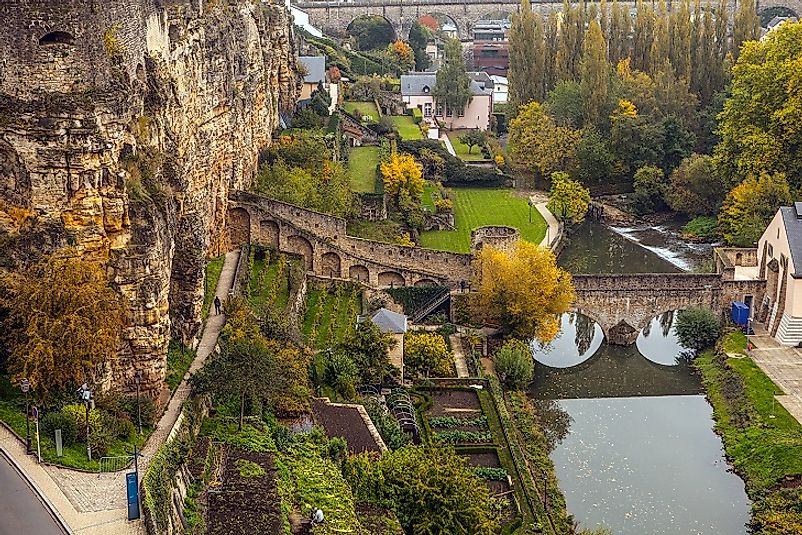Countries With The Highest Water Usage Productivity

Though 70% of the earth is covered with water, only 1% of the total fresh water resources on earth are practically useful for humans and ecosystems. The demographics and increase in consumption of water with a rise in per capita income are the most important drivers on water. According to UNESCO’s data, 70% of the fresh water withdrawals are consumed by irrigated agricultural industry. Around 20% of the total water used is taken from ground water sources, and this percentage is rapidly increasing particularly in dry areas.
High Levels of Economic Output Relative to Water Withdrawals
According to the data by Food and Agriculture Organization and OECD, the countries of Luxembourg, Equatorial Guinea and Denmark take the top three places, respectively, in terms of GDP per cubic meter of water withdrawals. Water withdrawal means fresh water taken from ground or surface water and conveyed to a place use.
Luxembourg
The latest value for water productivity, measured as the GDP per cubic meter of water withdrawals in Luxembourg, was $1,025.16 as of 2014. Over the past 27 years, the value for this indicator has fluctuated. Fresh water withdrawals in Luxembourg (including that used for domestic, industrial, and agricultural purposes) totaled up to 0.06 cubic kilometers per year, whereas in per capita measurements it amounted to 135.9 cubic meters per year.
Denmark
Denmark is situated in North-Western Europe in the region of Scandinavia. It is the 20th largest economy in the world with a gross domestic product (GDP) of 310 billion dollars. Water is an important resource for Denmark. According to the data provided by AQUASTAT, total water withdrawal per capita is 154 cubic meters per year, which is lower than Germany. Although Denmark is a highly industrialized country, the total renewable water resource is 6 cubic kilometers per year and only 11% of it is utilized for societal purposes.
Equatorial Guinea
At the west coast of Central Africa lie a small country named Equatorial Guinea, with a per capita GDP of over $30,000. In the United Nations Human Development (UNHD) Index list, Equatorial Guinea ranks at the 121st position out of 177 countries. The climate here is equatorial where annual precipitation is estimated to be 2077 millimeters. The total internal renewable water resource is estimated to be 30.0 cubic kilometers per year. According to the data provided by World Bank, the total annual fresh water withdrawals were last measured in 2011 at 0.07. Withdrawals for Agriculture (irrigation and live stock) and industrial use are high.
Water Rich and Water Poor Countries
Water is unequally distributed among nations in the world depending on their geography, ground water resources and water consumption as a whole. Six countries in the world (Brazil, Russia, Canada, Indonesia, China, and Colombia) account for half of the world’s fresh water supply. At the other end of the spectrum are Jordan, Israel, and Kuwait. As economies are growing and diversifying, the demands and consumption of water vary and is also rapidly increasing. With increasing demand and depleting water resources, there could be intense pressure on food production and supply.
Countries With The Highest Water Usage Productivity
| Rank | Country | GDP per Cubic Meter of Water Withdrawals |
|---|---|---|
| 1 | Luxembourg | $1,285 |
| 2 | Equatorial Guinea | $734 |
| 3 | Denmark | $501 |
| 4 | Maldives | $489 |
| 5 | Qatar | $365 |
| 6 | Ireland | $319 |
| 7 | Switzerland | $313 |
| 8 | Republic of the Congo | $310 |
| 9 | United Kingdom | $241 |
| 10 | Sweden | $192 |











